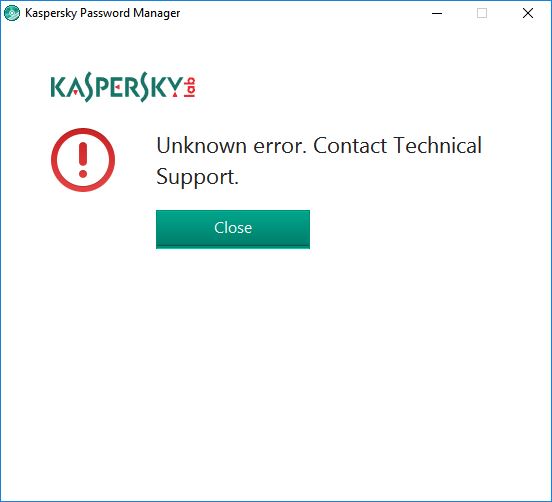

- Kaspersky password manager fixes flaw that Patch#
- Kaspersky password manager fixes flaw that windows 10#
27.0.0.159), but generally speaking only even-numbered Flash releases include security fixes.įor additional commentary on October’s bundle of updates from Microsoft, see these blogs from security vendors Ivanti and Qualys. Adobe did release a new version of Flash that includes bug fixes ( v. However, this time around the company has no security updates available.
Kaspersky password manager fixes flaw that Patch#
Normally, Adobe uses Microsoft’s Patch Tuesday (the second Tuesday of each month) to release its own fixes for Flash Player, Reader and other products. According to research from Bishop Fox, the security firm credited with finding and reporting the bug, this flaw could be exploited quite easily to gain complete control over vulnerable systems if the attacker controls or compromises a local network (think Wi-Fi hotspot). Another Office vulnerability, ( CVE-2017-11776), involves a flaw in Outlook’s ability to encrypt messages SEC-Consult has more details on this bug.Īnother critical flaw ( CVE-2017-11779) addresses a scary vulnerability in the domain name system (DNS) component of Windows 8 and Windows Server 2012. The bug quashed this week that’s being actively exploited resides in Microsoft Office ( CVE-2017-11826), and Redmond says attackers could seize control over a vulnerable system just by convincing someone to open a booby-trapped Word file. Researchers at CheckPoint recently released some interesting research worth reading about how attackers might soon use this capability to bypass antivirus and other security solutions on Windows.
Kaspersky password manager fixes flaw that windows 10#
One of the publicly disclosed Windows flaws ( CVE-2017-8703) fixed in this batch is a problem with a feature only present in Windows 10 known as the Windows Subsystem for Linux, which allows Windows 10 users to run unmodified Linux binary files. Roughly half of the flaws Microsoft addressed this week are in the code that makes up various versions of Windows, and 28 of them were labeled “critical” - meaning malware or malicious attackers could use the weaknesses to break into Windows computers remotely with no help from users.

Two of those flaws were detailed publicly before yesterday’s patches were released, and one of them is already being exploited in active attacks, so attackers already have a head start. Microsoft on Tuesday released software updates to fix at least 62 security vulnerabilities in Windows, Office and other software.


 0 kommentar(er)
0 kommentar(er)
